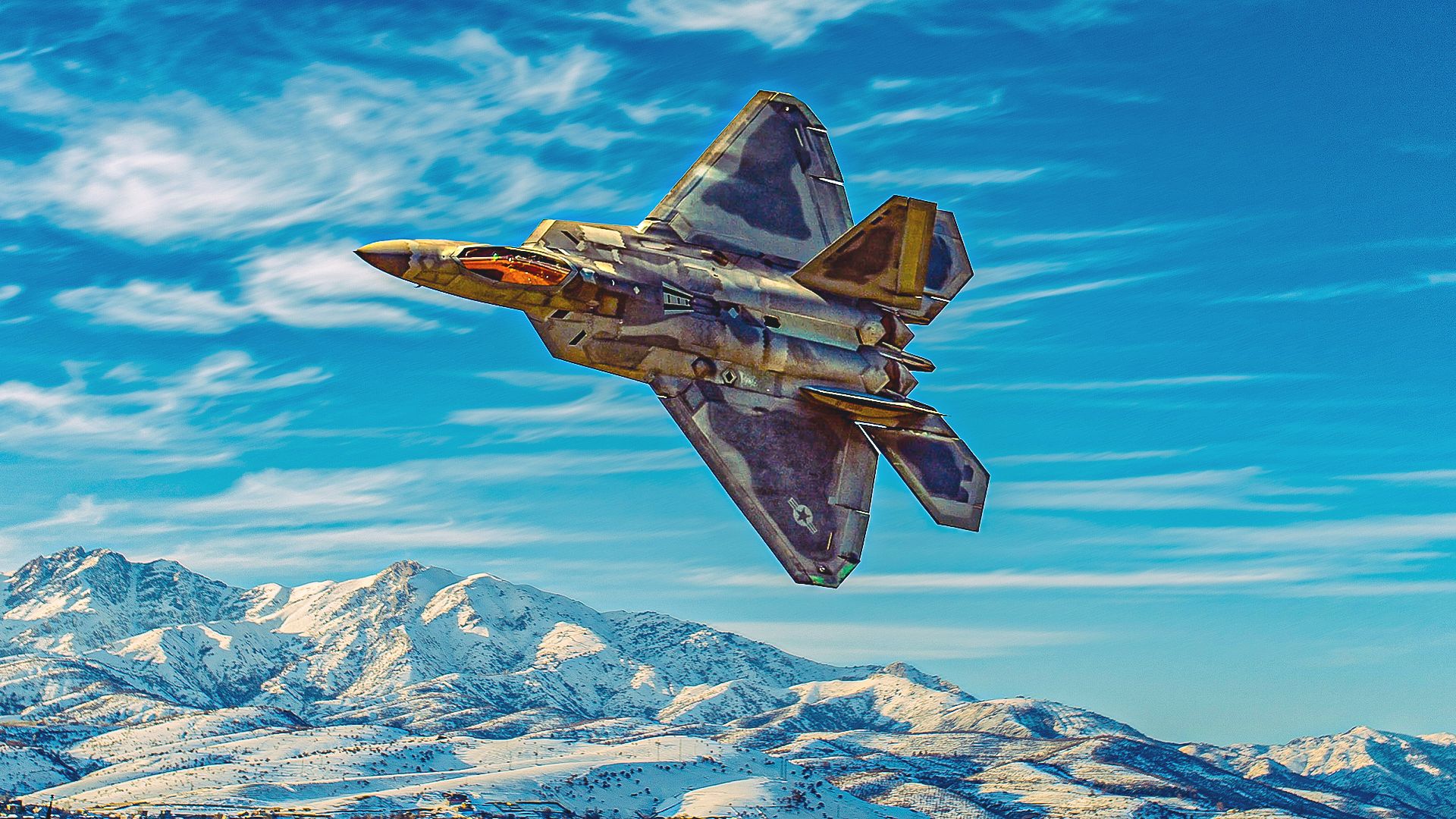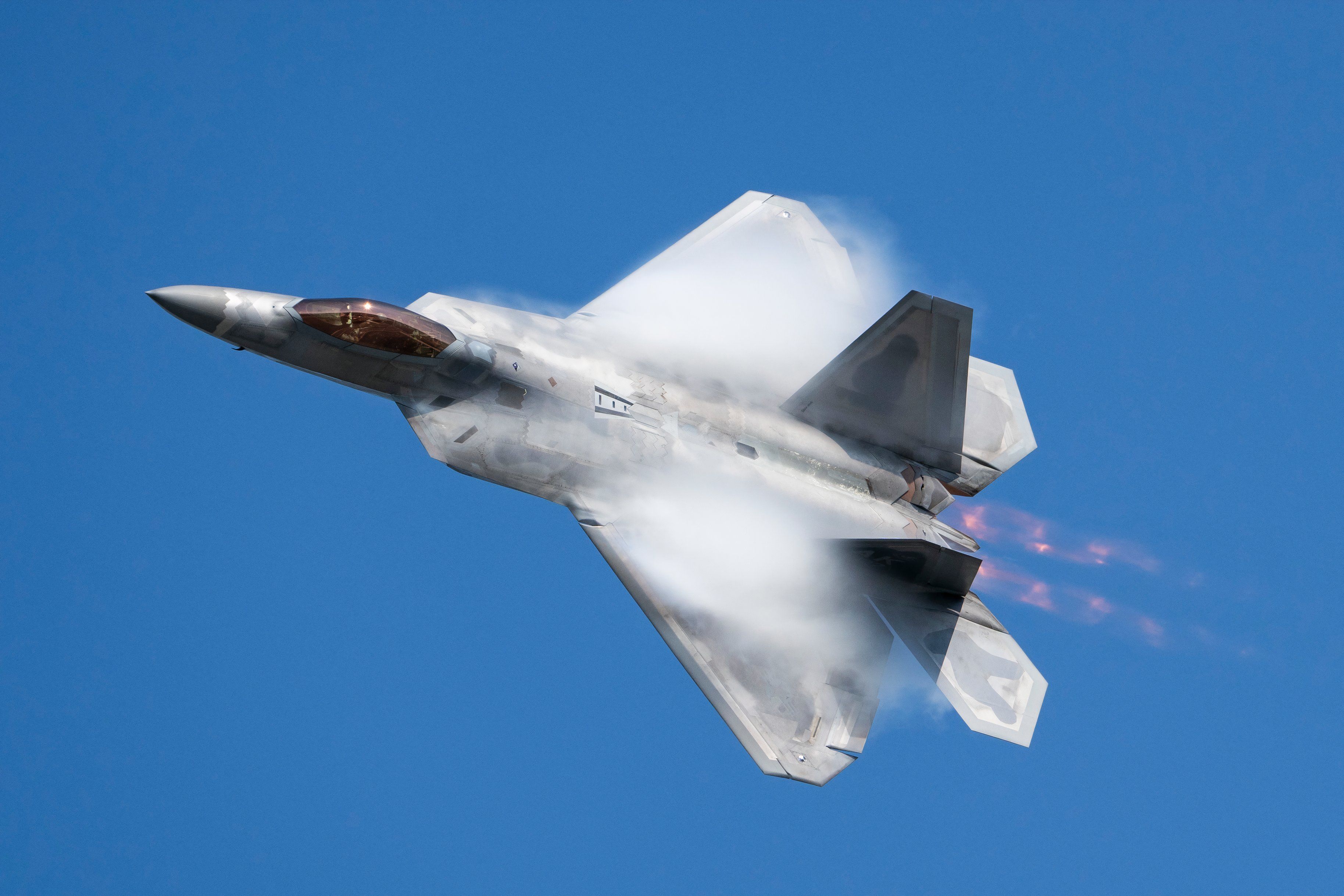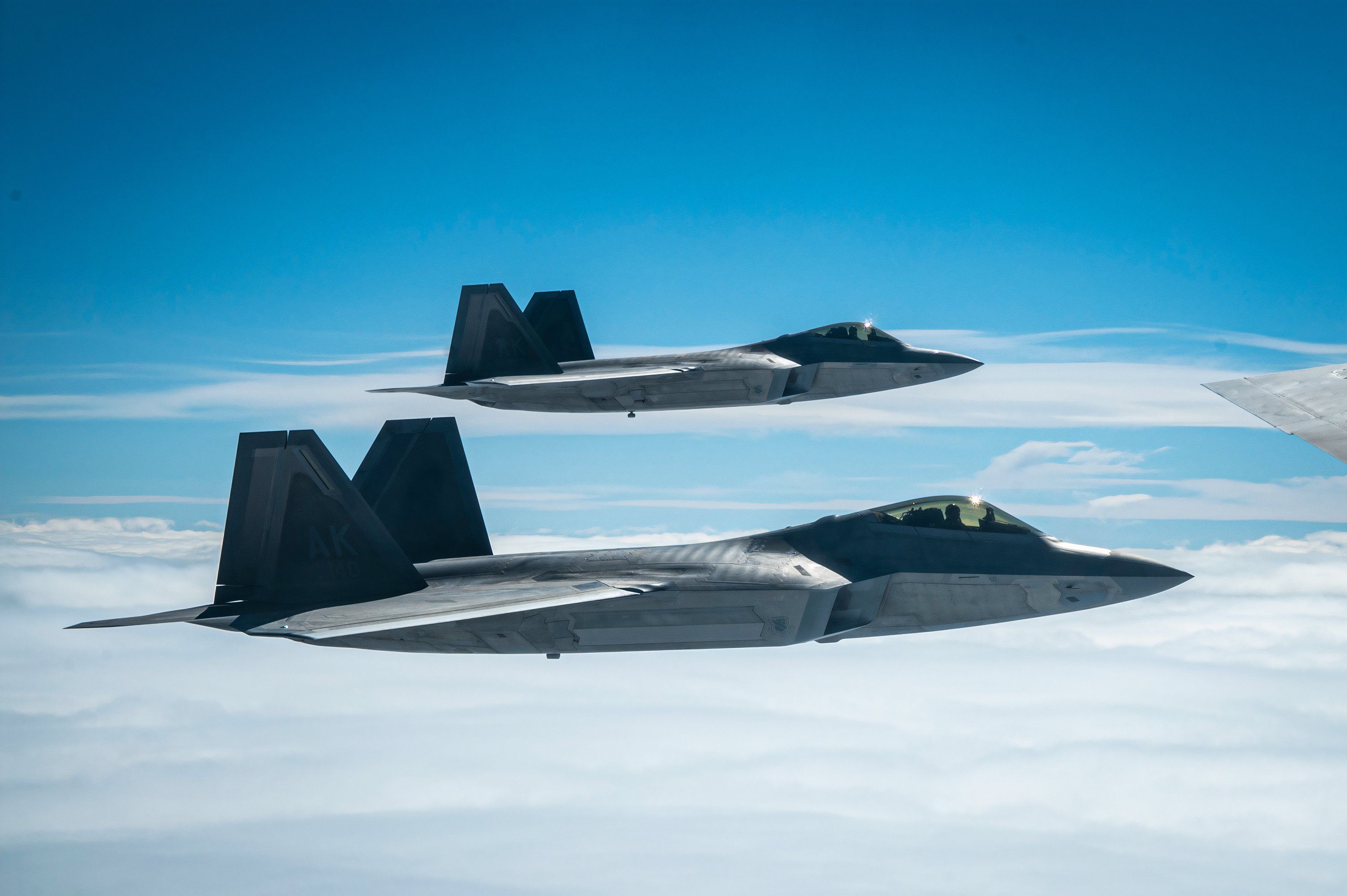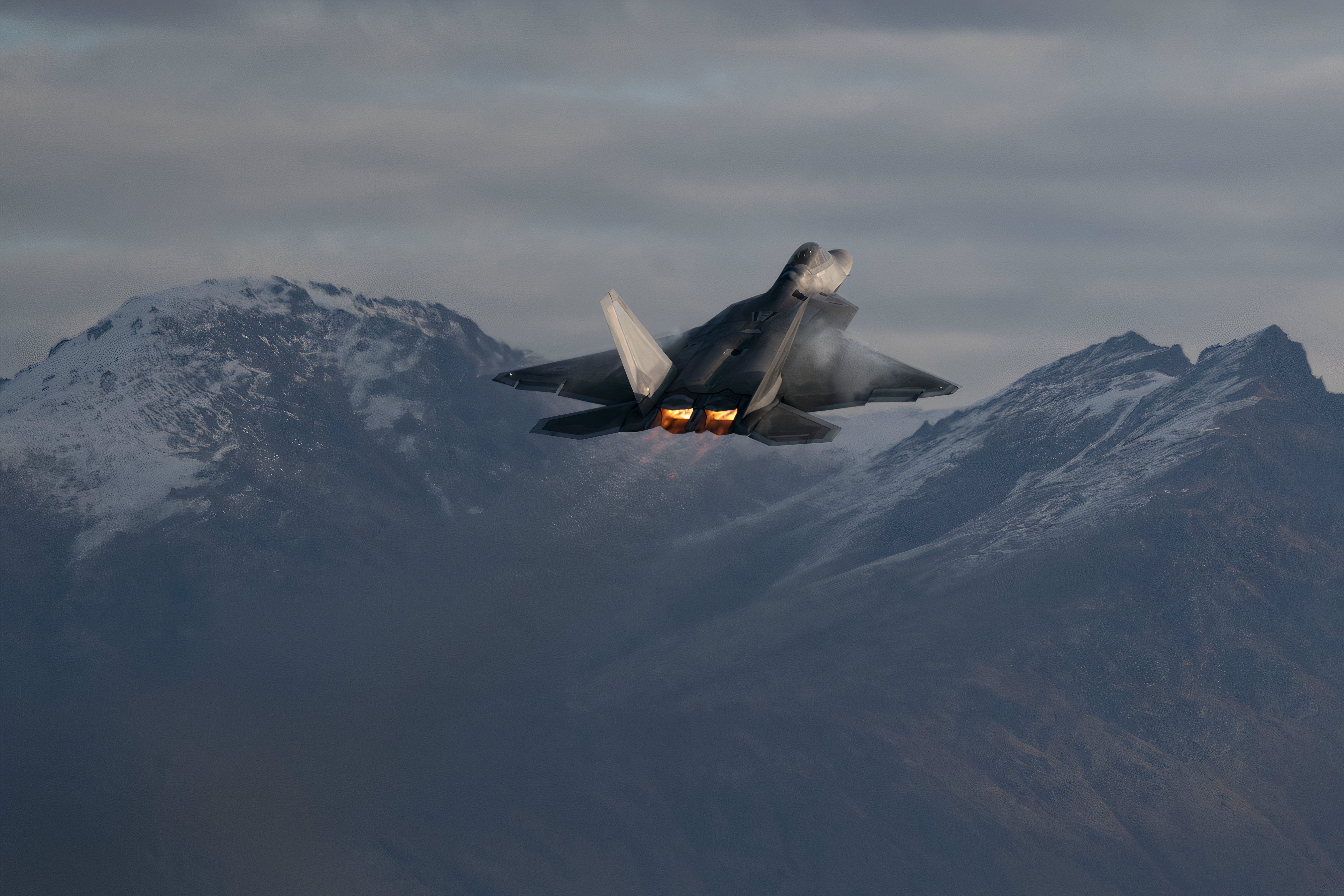Summary
- Despite not being initially required, the F-22 was sent to Al Dhafra Air Base near Iran in 2009.
- The F-22 stealthily protected drones from Iranian attacks over Iran’s coastline in 2012 and 2013.
- The F-22 saw combat for the first time in Operation Inherent Resolve in Syria in 2014, successfully bombing ISIS targets.
Despite being available to be used by the United States Air Force (USAF) in the wars in Iraq and Afghanistan and enforcing the no-fly zone in Libya, the USAF said that a high-tech jet like the F-22 was not required. During the conflicts in the Middle East, Defense Secretary Robert Gates was reluctant to deploy the fifth generation into combat.
In 2009, he changed his mind and allowed the F-22 to be sent to Al Dhafra Air Base in the United Arab Emirates (UAE). Located 20 miles south of Abu Dhabi, the planes were stationed at Al Dhafra Air Base, which meant they were only 200 miles from the Islamic Republic of Iran.
Iran tried to shoot down a General Atomics MQ-1 Predator drone
On November 1, 2012, Iranian radar spotted a USAF General Atomics MQ-1 Predator drone flying a surveillance mission off Iran’s coast. Not happy that the Americans were spying on them, the Iranian Revolutionary Guards dispatched two Soviet-era Sukhoi Su-25 fighter bombers.
When the aircraft spotted the drone, they opened fire with their onboard Gryazev-Shipunov GSh-23 autocannons but failed to hit the MQ-1 Predator.
Photo: USAF
In March 2013, the Iranians detected another American drone flying off its coastline and, this time, dispatched a pair of McDonnell Douglas F-4 Phantom IIs. Unannounced to the Iranians, the Americans had deployed.
A pair of Lockheed Martin F-22 Raptors to protect the drone. Because of the F-22’s stealth characteristics, the Iranian pilots did not know that the F-22s were there until one of them flew underneath one of the Phantoms
and then alongside it before telling the Iranian pilots to leave the area.
The F-22 is used to bomb ISIS in Syria
The Lockheed Martin F-22 Raptor saw combat for the first time on September 22, 2014, when F-22s performed some of the opening strikes of Operation Inherent Resolve, the name given to the American-led intervention in Syria.
The Syrian government regime of Bashar al-Assad was also battling ISIS, and its surface-to-air missile batteries remained passive during the American raids. Using GPS precision-guided bombs, the F-22 attacked Islamic training camps, barracks, and headquarters in north and eastern Syria.
Photo: USAF
Without saying where the F-22s had taken off from, Air Force Central Command Lt. Col. Tadd Sholtis told ABC News that F-22s were used to bomb an ISIS command and control center. When speaking to ABC News about the F-22’s role, Sholtis said:
“Basically, we look at the aircraft and the crews that we have, and we make a determination on how to portion those things, based on a lot of factors: location, nature of the target, weapons that may need to be used.”
“In this case, the F-22 was the weapon that got assigned to that particular target.”
“The mission was a success,” he added.
Throughout Operation Inherent Resolve, the USAF flew 204 F-22 sorties
over Syria, bombing 60 locations while also providing close air support for
US-backed Kurdish forces. The F-22 was also used to attack Russian Wagner Group paramilitary forces near Khasham in eastern Syria. Other than the bombing missions, the F-22’s main role in the conflict was to provide intelligence, surveillance, and reconnaissance information.

Related
Is The F-22 Raptor Really Unbeatable?
The Lockheed Martin F-22 Raptor is a Cold War aircraft designed to fight the Soviet Union.
During its deployment in the Middle East, the USAF also used the Lockheed Martin F-22 Raptor to operate alongside Boeing B-52 Stratofortress bombers tasked with destroying Taliban opium production and storage facilities in Afghanistan.
The United States sends F-22s to Europe
Following the February and March 2014 Russian invasion of the Crimean Peninsula and its annexation, the United States deployed Lockheed Martin F-22 Raptors to the following European air bases:
- Spangdahlem Air Base in Germany
- Łask Air Base in Poland
- Ämari Air Base in Estonia
On February 4, 2023, a Lockheed Martin F-22 Raptor of the 1st Fighter Wing stationed at Langley Air Force Base in Virginia shot down a Chinese spy balloon flying at 60,000 feet off the coast of South Carolina.
The incident marked the F-22’s first air-to-air kill. In March 2023, F-22s shot down two more Chinese balloons, one off the coast of Alaska and the other over the Yukon in western Canada.
How the Lockheed Martin F-22 Raptor came to be
Looking for an aircraft to replace the McDonnell Douglas F-15 Eagle and the General Dynamics F-16 Fighting Falcon, the United States Air Force started what it called the Advanced Tactical Fighter (ATF) program in 1981. At the time, the United States was worried about the new surface-to-air missiles and air superiority fighter program being developed by the Soviet Union.
Photo: USAF
In March 1986, several American aircraft manufacturers partnered to build what would become a fifth-generation air superiority fighter. On April 23, 1991, Secretary of the USAF Donald Rice announced that the Lockheed YF-23 was the winner.
The USAF initially wanted 750 F-22s, but after the collapse of the Soviet Union in December 1991, the need for a new fighter jet became less critical. After six years of development, the F-22 Raptor made its maiden flight on September 7, 1997, and entered service with the USAF on December 15, 2005.
Because of cuts to defense spending and the cost of the F-2 Raptor, production of the aircraft ceased in December 2011 when the 195th F-22 Raptor rolled off the production line.
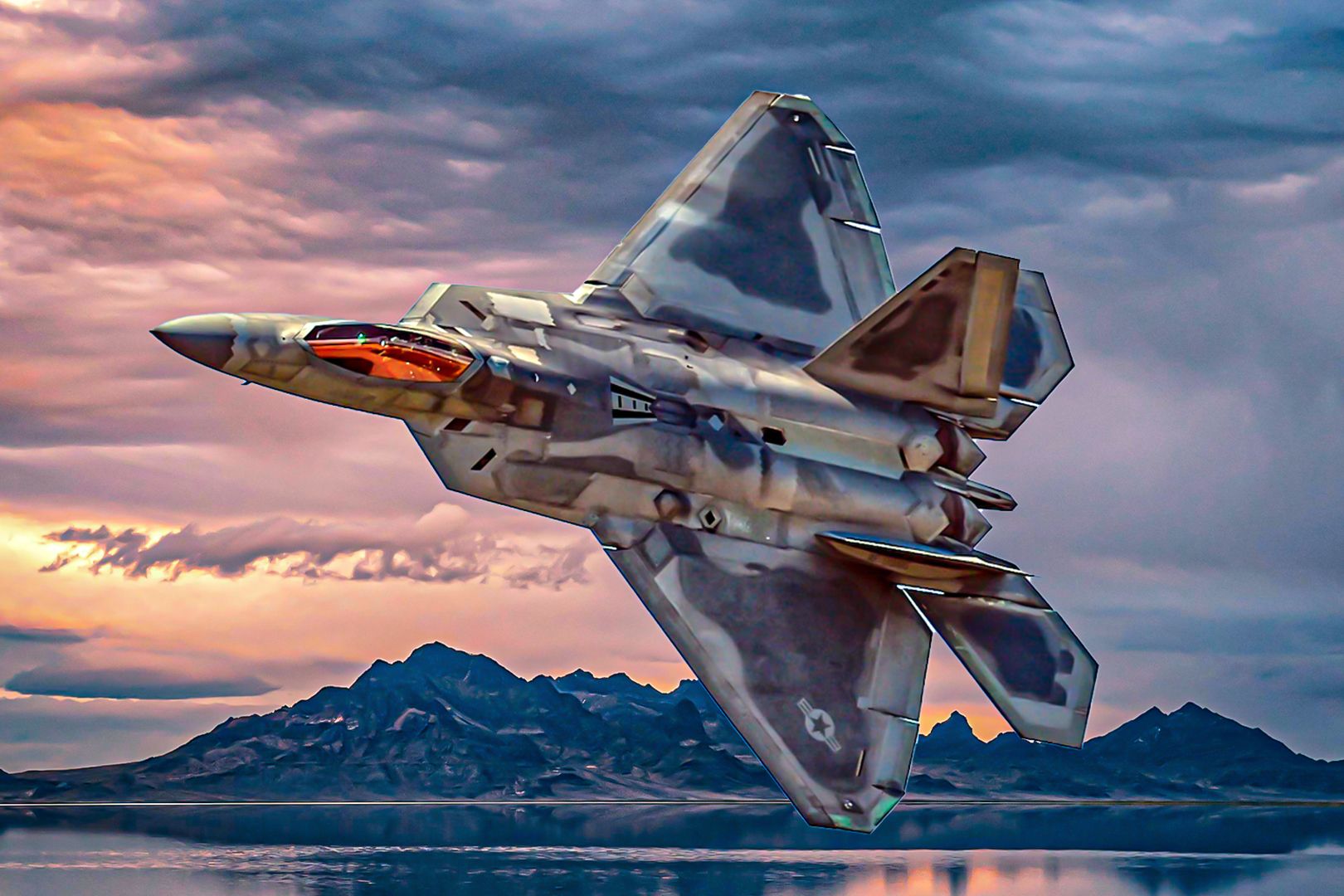
Related
5 Remarkable Features Of The Lockheed Martin F-22 Raptor
The last production F-22 Raptor was delivered in December 2012.
Specification and general characteristics of the Lockheed Martin F-22 Raptor
|
Crew |
1 |
|
Length |
62 feet 1 inch |
|
Wingspan |
44 feet 6 inches |
|
Height |
16 feet 8 inches |
|
Wing Area |
840 square feet |
|
Empty Weight |
43,340 lbs |
|
Gross Weight |
64,840 lbs |
|
MTOW |
83,500 lbs |
|
Fuel Capacity |
18,000 lbs |
|
Powerplant |
2 × Pratt & Whitney F119-PW-100 augmented turbofans |
Performance
|
Maximum Speed |
Mach 2.25 |
|
Range |
1,800 miles |
|
Combat Range |
530 miles |
|
Ferry Range |
2,000 miles |
|
Service Ceiling |
65,000 feet |

